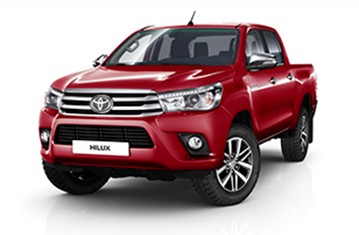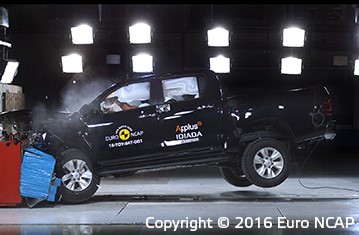Find more information in the General Comments section of the assessment
Find more information in the Rating Validity tab of the assessment
- See More
- See More
- See More
- See More
- Good
- Adequate
- Marginal
- Weak
- Poor
 Passenger
Passenger
 Driver
Driver
 Rear Passenger
Rear Passenger
 Driver
Driver
 Car
Car
 Pole
Pole
 Rear Seat
Rear Seat
 Front Seat
Front Seat
- Good
- Adequate
- Marginal
- Weak
- Poor


Passenger
outboard
center
Fitted to the vehicle as standard
Not fitted to the test vehicle but available as option
Not Available
-
i-Size CRS
-
ISOFIX CRS
-
Universal Belted CRS
Easy
Difficult
Safety critical
Not allowed
| Seat Position | ||||
|---|---|---|---|---|
| Front | 2nd row | |||
| Passenger | Left | center | Right | |
| Maxi Cosi 2way Pearl & 2wayFix (rearward) (iSize) | ||||
| Maxi Cosi 2way Pearl & 2wayFix (forward) (iSize) | ||||
| BeSafe iZi Kid X1 i-Size (iSize) | ||||
| Maxi Cosi Cabriofix & FamilyFix (ISOFIX) | ||||
| BeSafe iZi Kid X3 ISOfix (ISOFIX) | ||||
| Britax Römer Duo Plus (ISOFIX) | ||||
| Britax Römer KidFix XP (ISOFIX) | ||||
| Maxi Cosi Cabriofix (Belt) | ||||
| Maxi Cosi Cabriofix & EasyBase2 (Belt) | ||||
| Britax Römer King II LS (Belt) | ||||
| Britax Römer KidFix XP (Belt) | ||||
Easy
Difficult
Safety critical
Not allowed
In the frontal offset test, neck tension and chest deceleration revealed, respectively, marginal and weak protection for those body areas in the 6 year dummy. Protection of the 10 year dummy was good, apart from adequate protection of the neck, and, in the side impact was good for all critical body areas for both child dummies. The Hilux has an automatic system for disabling the front passenger airbag when, for example, a rearward-facing child restrain is used in that position. The system met Euro NCAP's requirements and was rewarded. All child restraints for which the Hilux is designed could be accommodated. However, the group 1 ISOFIX seat needed care to ensure correct installation and the rear centre seat is deemed unsuitable for child restraints by Toyota, although restraints could be properly installed there.
- Good
- Adequate
- Marginal
- Weak
- Poor

Head Impact 18.9 Pts
Pelvis Impact 6.0 Pts
Leg Impact 6.0 Pts
| System Name | Pre-Collision System with Pedestrian Detection as part of Toyota Safety Sense | ||
| Type | Auto-Brake with Forward Collision Warning | ||
| Operational From | 10 km/h | ||
| Additional Information | Defaults on for every journey; operates above 40km/h and in low ambient light | ||
| PERFORMANCE | | |||
| Autobrake Function | |||
| Avoidance | Mitigation | ||
|
Running Adult crossing from Farside
|
Collision avoided up to 35 km/h | Impact mitigated up to 60 km/h | |
|
Walking Adult crossing from Nearside -25%
|
Collision avoided up to 25 km/h | Impact mitigated up to 60 km/h | |
|
Walking Adult crossing from Nearside -75%
|
Collision avoided up to 35 km/h | Impact mitigated up to 60 km/h | |
|
Running Child from behind parked vehicles
|
No crash avoidance | No crash mitigation | |
The bonnet provided good or adequate head protection over most of its surface, with some poorer results only along the front edge and on the stiff windscreen pillars. Protection provided by the bumper to pedestrians' legs, and the protection provided to the pelvis, was good at all points tested. An autonomous emergency braking system capable of detecting pedestrians is available as an option. Tests showed good performance, with impacts avoided or mitigated in many scenarios.
- Good
- Adequate
- Marginal
- Weak
- Poor
| System Name | Road Sign Assist as part of Toyota Safety Sense |
| Speed Limit Information Function | Camera based, subsigns supported |
| Warning Function | Speed limit information only |
| Speed Limitation Function | Speed limit information only |
| Applies To | All seats | ||
| Warning | Driver Seat | Front Passenger(s) | Rear Passenger(s) |
| Visual | |||
| Audible | |||
|
|||
| System Name | Lane Departure Alert as part of Toyota Safety Sense |
| Type | Lane Departure Warning |
| Operational From | 50 km/h |
| Warning | Audible |
| Performance | |
|
LDW Confirmation Test
|
Pass |
| System Name | Pre-Collision System with Pedestrian Detection as part of Toyota Safety Sense | |||
| Type | Forward Collision Warning with Auto-Brake | |||
| Operational From | 10 km/h | |||
| Additional Information | Default On | |||
| Performance | | ||||
| Autobrake Function Only | Driver reacts to warning | |||
| Operational Speed | 10-180 km/h | 10-180 km/h | ||
| Approaching a stationary car | See AEB City | Crash avoided up to 55km/h.Crash speed reduced up to 80km/h. | ||
| Approaching a slower moving car | Crash avoided up to 70km/h. | Crash avoided up to 80km/h. | ||
| Following a car at short distance | ||||
| Car in front brakes gently | Mitigation | Avoidance | ||
| Car in front brakes harshly | Mitigation | Mitigation | ||
| Following a car at long distance | ||||
| Car in front brakes gently | Avoidance | Avoidance | ||
| Car in front brakes harshly | Avoidance | Avoidance | ||
The Hilux has a seatbelt reminder system as standard, covering the front and rear seats. All other items relevant to Safety Assist are provided in the optional safety pack. A lane assistance system warns the driver when the car is drifting over a lane marking. A camera-based speed assistance system recognises speed signs, including subsigns indicating speed limits for certain conditions (e.g. poor weather) and indicates the limit to the driver. The autonomous emergency braking system works at highway speeds and performed well in Euro NCAP's tests, with complete impact avoidance in some of the test scenarios.
- Specifications
- Safety Equipment
- Videos
- Rating Validity
Specifications
Tested Model Toyota Hilux Double-Cab, 2.4 diesel 4x4, mid grade, LHD
Safety Pack Name Toyota Safety Sense
Body Type - Pickup
Year Of Publication 2016
Kerb Weight 2050kg
VIN From Which Rating Applies - Hilux double-cabs with optional 'Toyota Safety Sense'
Class Pickup Truck
Safety Equipment
Note: Other equipment may be available on the vehicle but was not considered in the test year.
Fitted to the vehicle as standard
Fitted to the vehicle as part of the safety pack
Not fitted to the test vehicle but available as option or as part of the safety pack
Not available
Not applicable
Videos
Rating Validity
Find more information in the General Comments section of the assessment
 Share
Share











The passenger compartment remained stable in the frontal offset test. Dummy readings showed good protection of the knees and femurs of the driver and passenger. Toyota showed that a similar level of protection would be provided for occupants of different sizes and to those sat in different positions. The driver's airbag was insufficiently inflated to prevent 'bottoming out', and the head contacted the steering wheel through the airbag material. Although dummy readings were not hazardous, the score was penalised and protection rated as adequate. Protection of the passenger dummy was good for all critical body areas. In the full width rigid barrier test, protection was good except for the chest of the front seat driver, protection of which was adequate and the chest of the rear seat passenger, protection of which was marginal. In both the side impact barrier test and the more severe side pole impact, the Hilux scored maximum points with good protection of all critical body regions. Likewise, tests showed that the whiplash protection provided by the front seats and head restraints was good in the event of a rear end collision and a geometric assessment of the rear seats indicated good protection there also. Increased whiplash protection is provided by an autonomous emergency braking system, available as part of the option pack. The system performed well in tests at the low speeds typical of city driving at which many whiplash accidents occur.